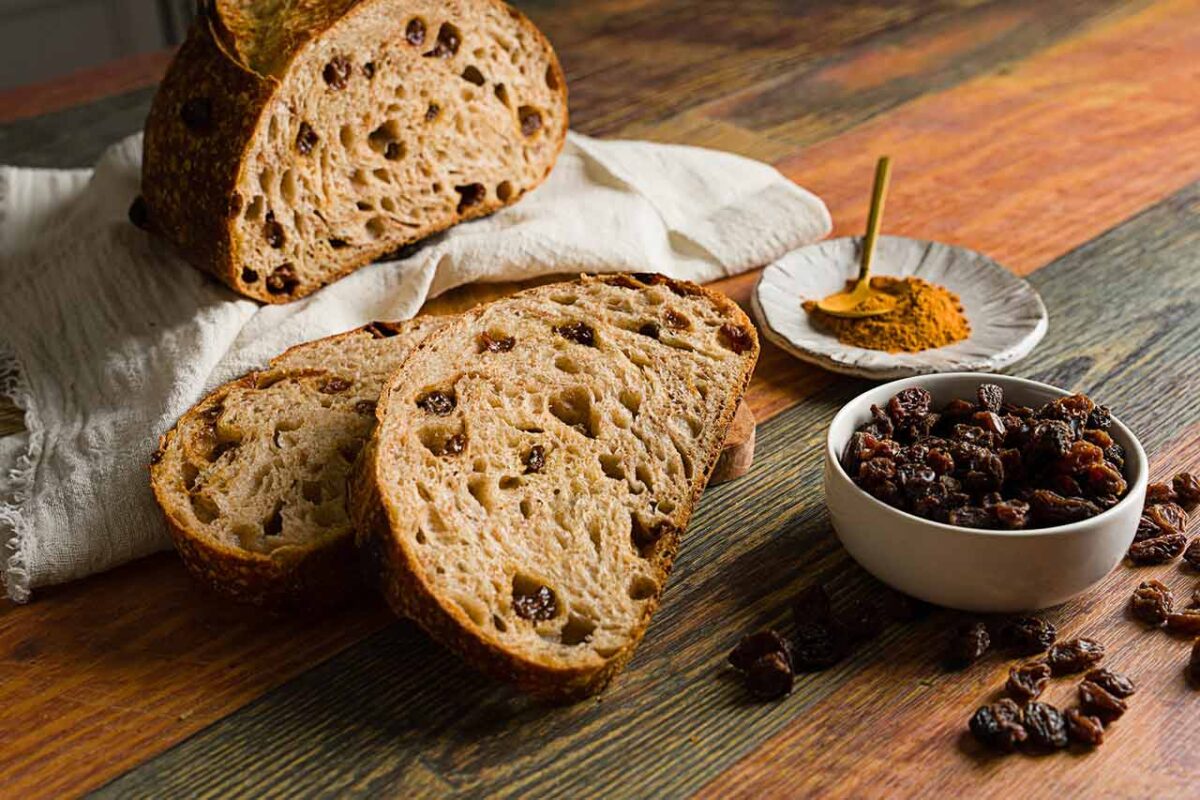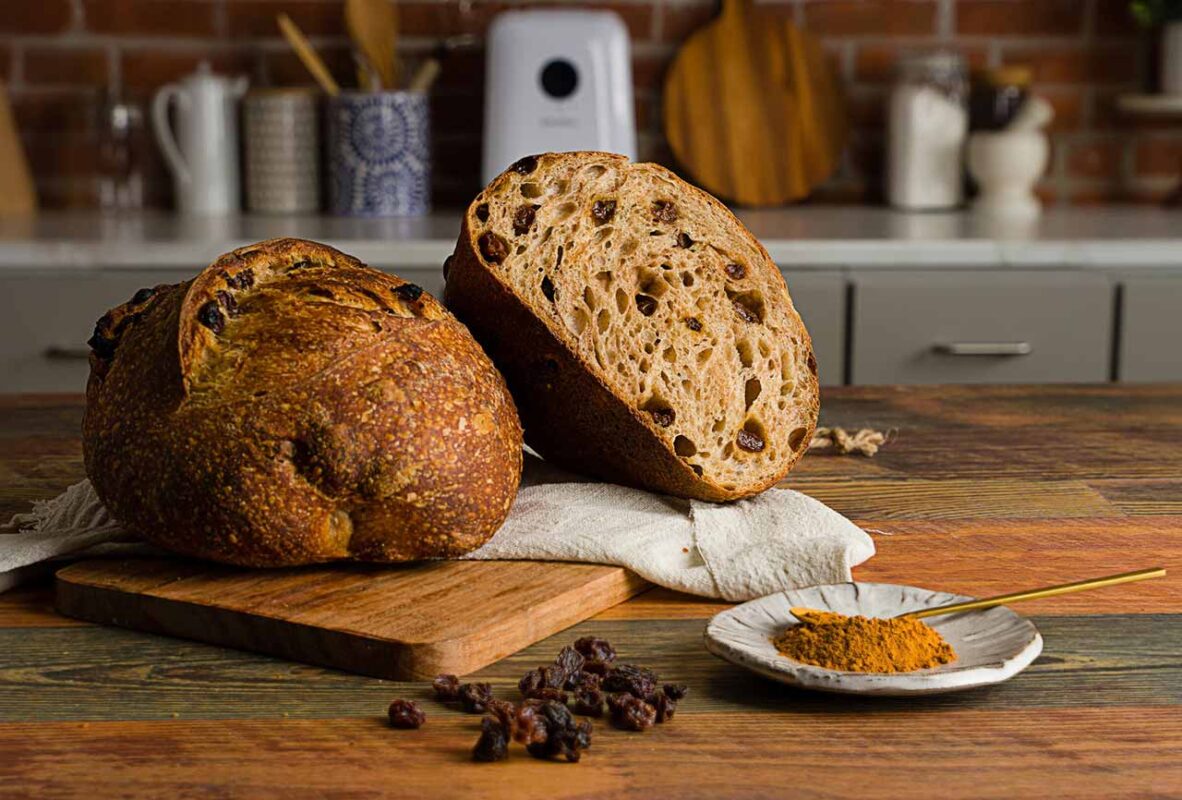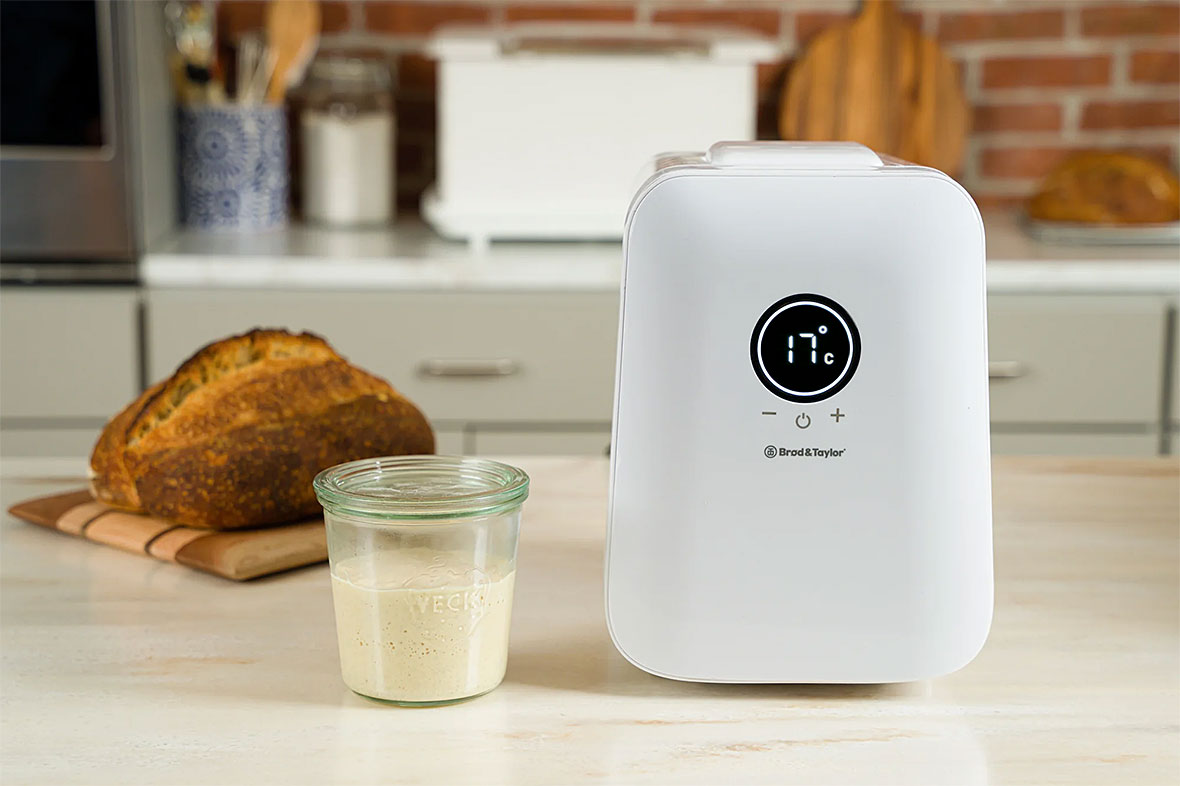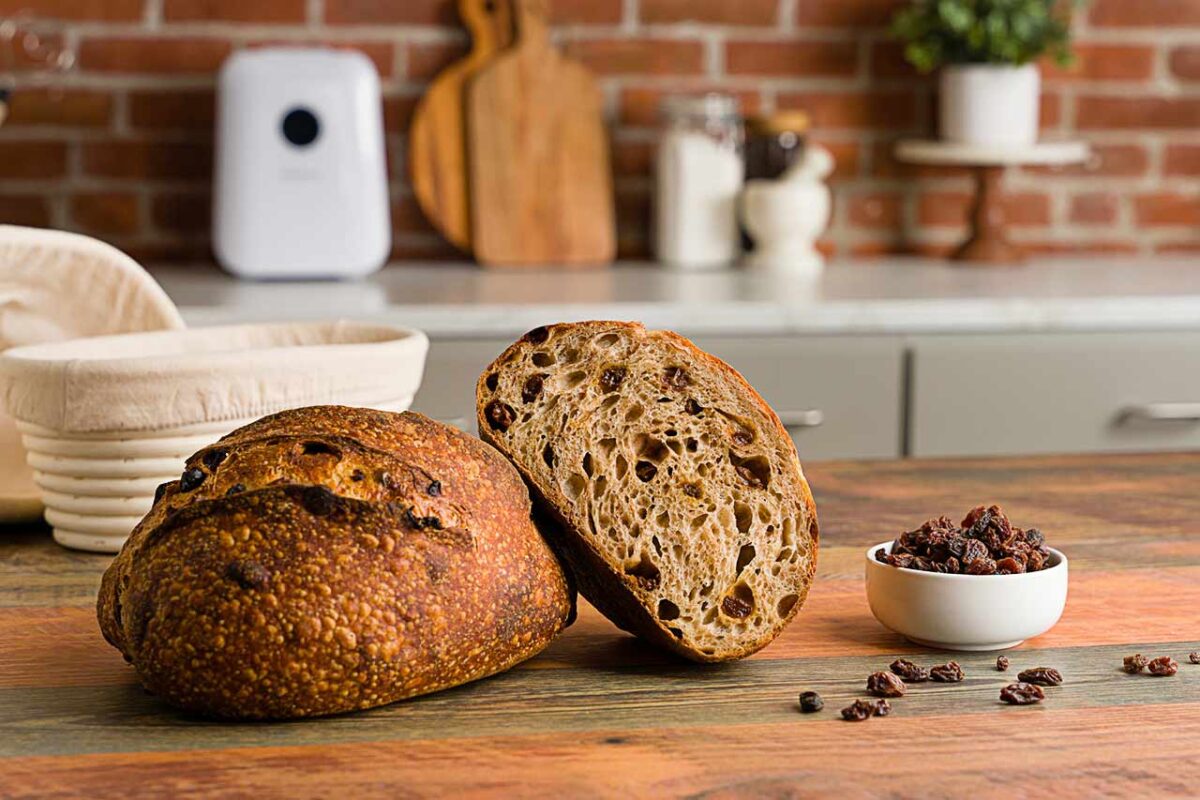Bread & Sourdough Recipes
Cinnamon Raisin Sourdough
Cinnamon Raisin Sourdough Bread Recipe
Studded with plump raisins and spiced with cinnamon, this loaf smells just as good as it tastes. The addition of whole wheat flour balances the sweetness of the raisins, and aromatic cinnamon is laced throughout the dough, providing delicious flavor in every bite.
To ensure the best results, make sure your starter has peaked before incorporating it into the dough. Using a temperature-controlled environment, such as the Sourdough Home, will help you control when your starter peaks so it’s ready to use when you are ready to bake.

| Prep 24 hours | Cook 40 minutes | Total 25 hours |

| Yield Two loaves |
Brød & Taylor Equipment:
- High Capacity Baking Scale
- Folding Proofer & Slow Cooker
- Sourdough Home
- Bench Knife
- Bread Steel
- Baking Shell (Boule)
Ingredients
- 600 g Bread flour
- 200 g Whole wheat flour
- 16g Salt
- 193 g Ripe Sourdough Starter, 100% hydration
- 600 g Water
- 32 g Maple syrup
- 190 g Raisins
- 8 g Cinnamon

Instructions
- Set up the Proofer: Set the Proofer to 27°C and put the water tray in the middle of the warming plate. Pour 60 ml of water into the tray and place the rack on top of the tray.
- Hydrate the raisins: We find most raisins benefit from this step, but if your raisins are plump and moist, this step can be skipped. Measure the raisins into a heatproof bowl. Pour enough boiling water over the raisins so that they are completely submerged. Set the bowl aside for 20 to 25 minutes. Drain the raisins and allow them to cool completely. Mix the dough while the raisins are cooling.
- Mix the dough: In a large bowl, add the starter, water, and maple syrup. Stir thoroughly using a dough whisk until the starter has dissolved. Add the bread flour, wheat flour, and salt and stir until no dry bits remain. At this point, you may need to switch to your hands and begin lightly kneading the dough until all of the flour has been hydrated. Turn the dough onto the counter and slap and fold for 3 to 4 minutes. Alternatively, you can keep the dough in the bowl and perform stretch and folds for a couple of minutes to build strength. Place the dough into a clean bowl.
- Bulk ferment: Bulk fermentation will take about 5 hours in total at 27°C. During the first 2 hours of bulk fermentation, folds will be performed, and the raisins and cinnamon will be added. Place the bowl in the Proofer. After the first 30 minutes of proofing, remove the bowl from the Proofer and perform the first set of stretch and folds. To perform a set of stretch and folds: with the dough still inside the bowl, pick up one edge of the dough, stretch it as far as it will go, and then fold it into the center. Turn the bowl 90 degrees and repeat this motion 3 more times until you have gone around the circumference of the bowl. Place back into the Proofer for 30 minutes. Remove the bowl from the Proofer and laminate in the raisins and cinnamon. To laminate the raisins and cinnamon: Lightly dampen a countertop to prevent the dough from sticking, and turn the dough out onto the counter. Gently pick up one side of the dough, slide your hands underneath, and gently stretch the dough toward you. Repeat this process on all sides to achieve a large thin rectangular shape. Sprinkle the raisins and then the cinnamon over the entire surface of the dough. Take one side of the dough and fold it in toward the center. Then repeat on the opposite side. You will now have a long skinny rectangular shape. Starting at the bottom, roll up the dough to the top edge, creating a roundish shape. Place the dough back into the Proofer to rest for 30 minutes. Perform two more sets of folds at 30-minute intervals. Let the dough rest for the remainder of the bulk fermentation time.
- Divide & preshape: Turn the dough out onto the counter, divide it into two pieces (each weighing about 915g), and shape each into a loose round. Let the rounds rest for 20 to 30 minutes.
- Final shape: Lightly flour the top of the rounds, and then flip over, so the floured side is on the counter. To shape into a batard: Gently press it out into a rectangle, working carefully so that you don’t pop the bubbles in the dough. With the long side of the rectangle facing you, grab the left side of the dough and fold it in toward the center. Repeat with the right side. Grab the top edge of the dough and gently roll it towards you, gently pushing away as you roll to build some outer tension. When you have reached the bottom edge, pinch the seam of the cylinder together and place the dough seam side up in a 25 or 28 cm oval banneton. Repeat with the second round. (These loaves may also be shaped into boules if desired.)
- Cold proof: Place the loaves in the refrigerator overnight. If desired, you can bake the loaves on the same day. Instead of refrigerating, place the bannetons in the Folding Proofer set to 26°C, proof for 2 to 3 hours, and then bake.
- Bake: The next day, about 20 minutes before you are ready to bake, place the Bread Steel in the lower ⅓ of your oven and preheat to 232°C. The steel heats quickly, and when the oven is ready, the Bread Steel will be too. There is no need to preheat the Baking Shell. When the oven is ready, remove the loaf from the refrigerator. Turn the loaf out onto a well-floured bread peel or a piece of parchment paper. Using a sharp knife or bread lame, score the dough. Slide your loaf onto the hot steel and immediately cover it with the Baking Shell. Bake for 20 minutes with the shell on. Remove the shell, turn the oven down to 218°C, and continue baking for another 18 to 20 minutes. Remove from the oven and the loaf on a rack to cool. Repeat baking steps with the second loaf.




 Select Country
Select Country











